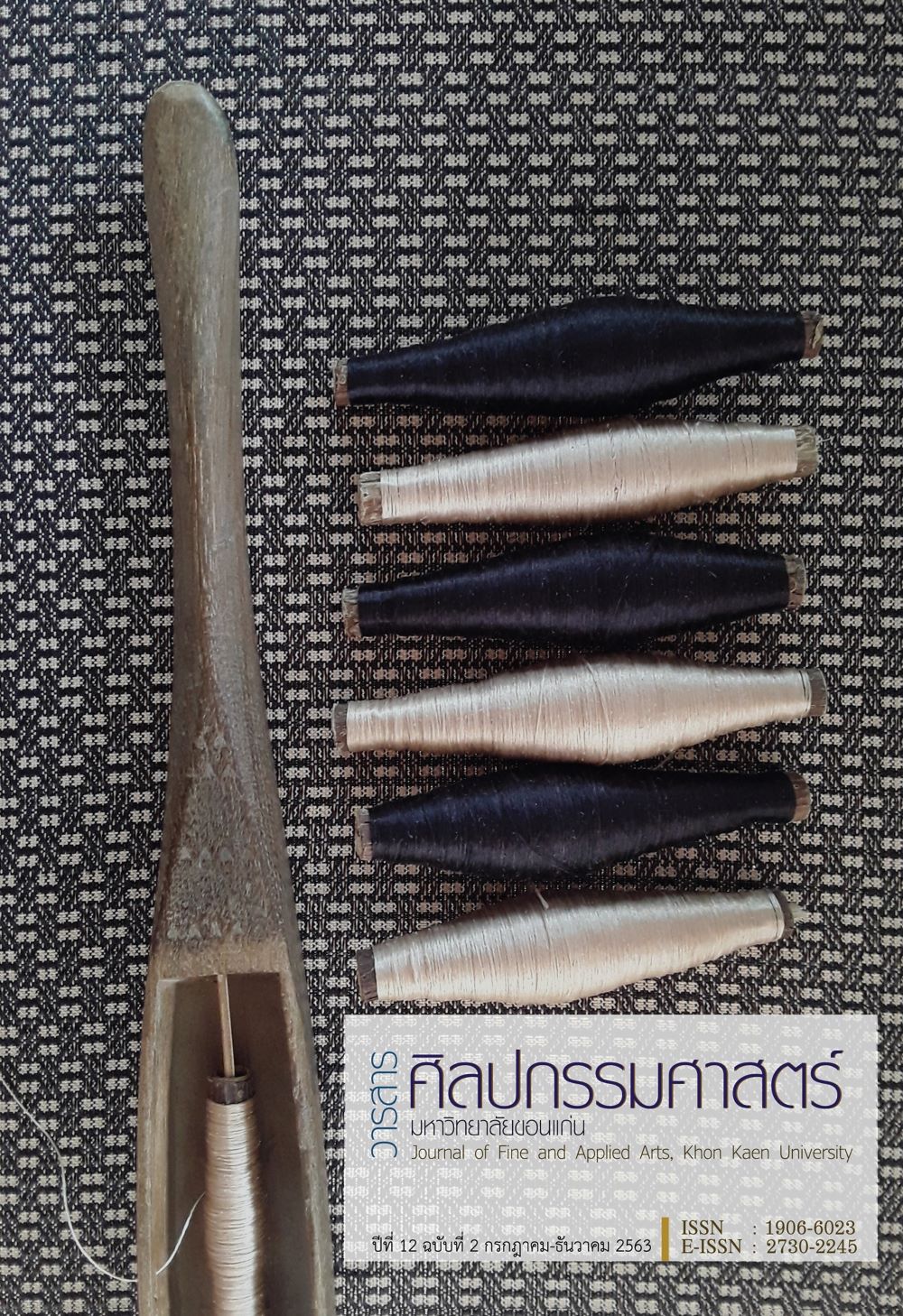The Technical Creative Playing Khaen Mouth Organ Styls Lai Yai
Main Article Content
Abstract
This study aims to investigate technics and creations of Khaen intonation playe by two distinguished Khaen players, Mr. Sombut Simla and Mr. Buahong Phajuang. The analysis examined the factors that made Khaenhave smooth and nice intonation, for instances, blow, tongue, fingers, and level of intonation, emotion of player, and rhythm. The findings shown that the two Khaen players have different Khaen playing approaches, especially blow, tongue, and rhythm. Mr. Sombut has more tactics than Mr. Buahong because he liked listening to music. This allowed him to learn and absorb technics and rhythm from music. In contrast, Mr. Buahong likely played Khaen in a classical way. Playing Khaen in his style did not produce a creative rhythm. Nevertheless, these findings help create new patterns for Khaen players. For creative pattern, a researcher employed the technics from both Khaen players to develop new Khaen Lai Yai playing styles. In addition, a researcher created Thai notes and international notes for further understanding and interested people.
Article Details
Content and information in articles published in the Journal of Fine and Applied Arts of Khon Kaen University is regarded as the opinion and sole responsibility of the author(s) directly; therefore, editors are not obliged to agree to or share any responsibility with regard to the content and information that appears within these articles.
All articles, information, content, image, etc. that have been published in the Journal of Fine and Applied Arts of Khon Kaen University is the copyright of the Journal of Fine and Appllied Arts of Khon Kaen University. Any person or organization who wishes to distribute all or parts of the articles for further dissemination or other usage must first receive permission from the Journal of Fine and Applied Arts of Khon Kaen University before proceeding to do so.
References
เจริญชัย ชนไพโรจน์. (2526). ดนตรีพื้นบ้านอีสาน. มหาสารคาม: ภาควิชาดุริยางคศาสตร์ มหาวิทยาลัยศรีนครินทรวิโรฒ มหาสารคาม.
สมจิตร พ่วงบุตร. (2531). สภาพปัญหาและข้อจำกัดในการส่งเสริมและเผยแพร่นาฏศิลป์และดนตรีพื้นบ้าน. ใน แนวทางการส่งเสริมและเผยแพร่วัฒนธรรมพื้นบ้านไทย. (หน้า 17–23). กรุงเทพฯ: โรงพิมพ์คุรุสภาลาดพร้าว.
ธรรมจักร พรหมพ้วย. (2544). กระบวนการสร้างสรรค์การแสดงชุด Meta Selfie ฉุยฉาย. นิเทศสยามปริทัศน์, 16(21), 90-96.
วินัย ใจเอื้อ. (2546). แนวทางการสืบทอดและพัฒนาการขับงึม เมืองทุละคม แขวงเวียงจันทร์ ประเทศสาธารณรัฐประชาธฺปไตยประชาชนลาว. วารสารความหลากหลายทางวัฒนธรรม, 10(21), 100-116.


